15+ SAMPLE Construction Investment Proposal
-

Real Estate Construction Investment Package Proposal
download now -

Construction Investment Proposal Template
download now -
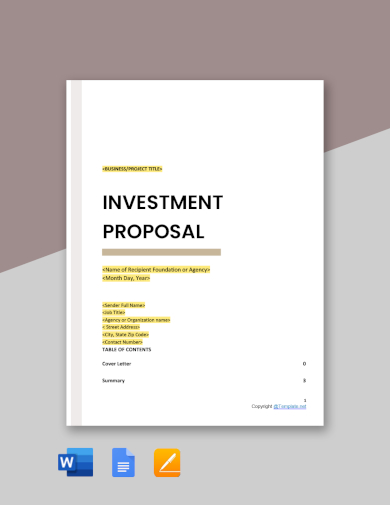
Basic Construction Investment Proposal Template
download now -

Construction Startup Investment Proposal Template
download now -
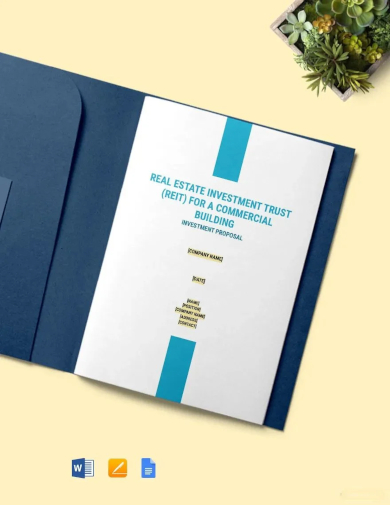
Construction Stock Investment Proposal Template
download now -
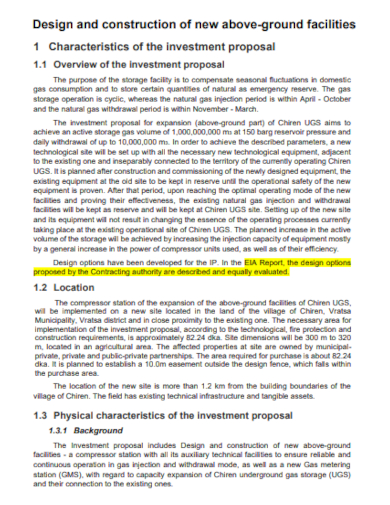
Construction Company Investment Proposal
download now -
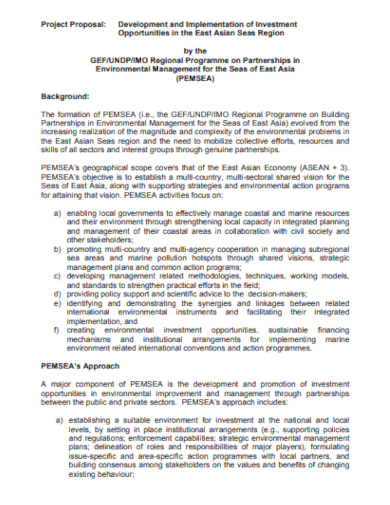
Construction Project Investment Proposal
download now -
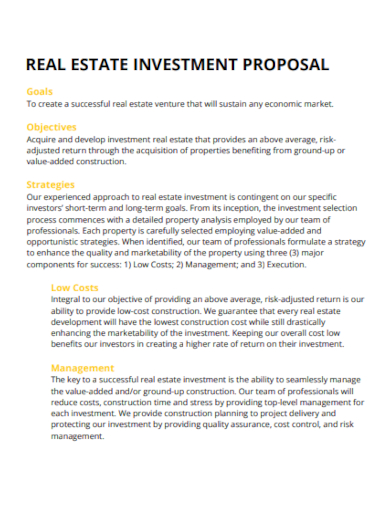
Real Estate Investment Proposal
download now -
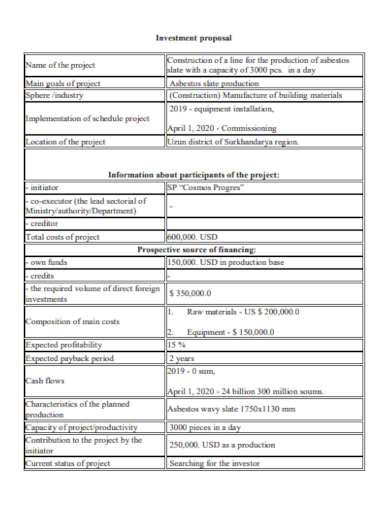
Sample Construction Investment Proposal
download now -
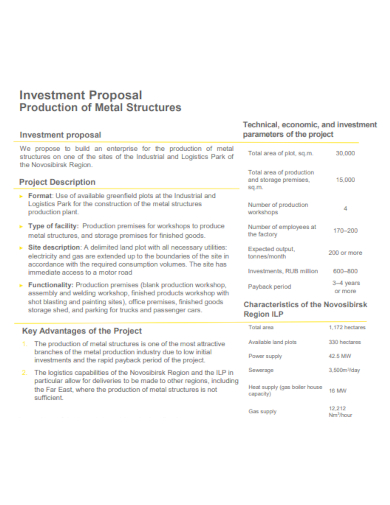
Construction Investment Proposal in PDF
download now -
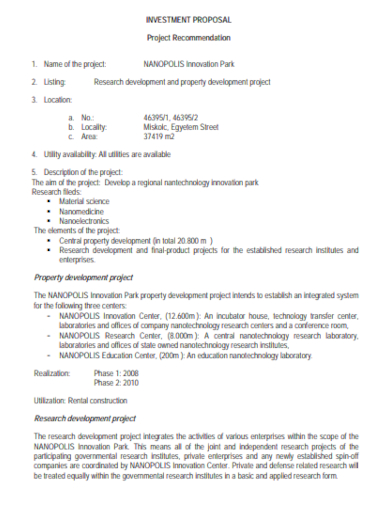
Construction Development Investment Proposal
download now -
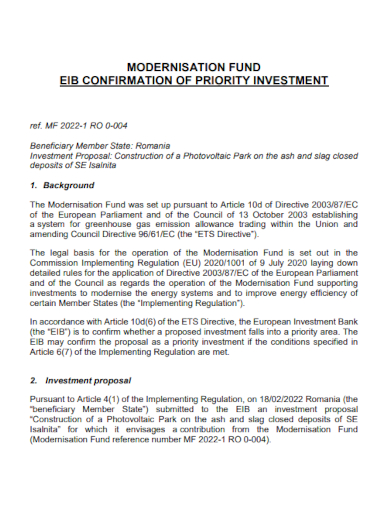
Construction Funding Investment Proposal
download now -
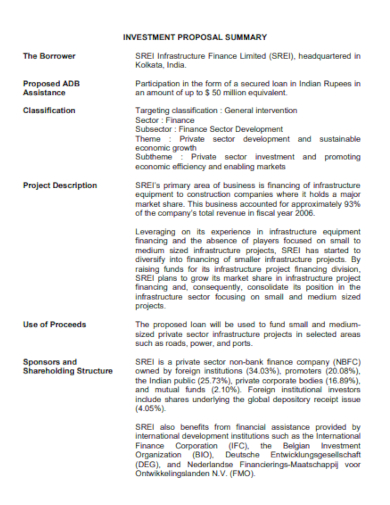
Construction Property Investment Proposal
download now -
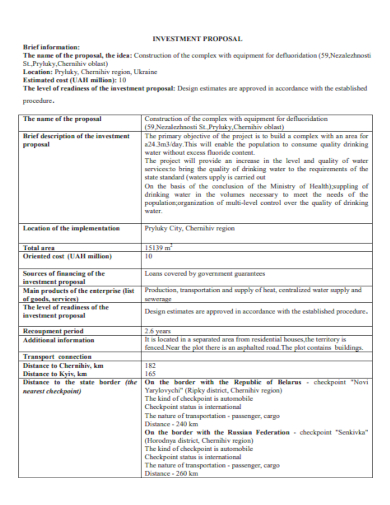
Construction Investment Proposal Example
download now -
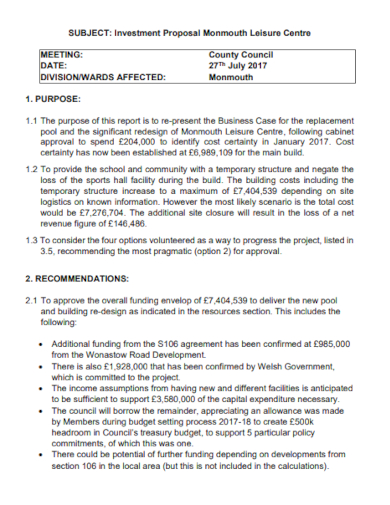
Construction Business Investment Proposal
download now -
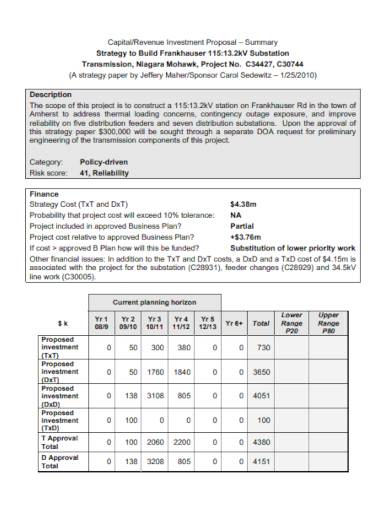
Construction Capital Investment Proposal
download now
FREE Construction Investment Proposal s to Download
15+ SAMPLE Construction Investment Proposal
Definition and Overview
Key Considerations for Construction Investment:
Benefits of Construction Investment Proposal:
Challenges and Risks:
Strategies for Successful Investment
Evaluating Potential Returns for Investment Proposal:
What risks might a construction investment proposal overlook?
Why is a realistic projection vital in a proposal?
How does a construction proposal ensure regulatory compliance?
Can an investment proposal adapt to changing market conditions?
What makes a successful investment proposal?
When should a Construction Investment Proposal be reviewed and updated?
Definition and Overview
Construction investment refers to the allocation of funds into construction-related projects with the expectation of obtaining future returns. This can range from residential housing projects to vast commercial infrastructure developments. Investing in construction is crucial for urban development, economic progress, and providing essential amenities to the populace. It’s a tangible asset class that has the potential for significant returns.
Key Considerations for Construction Investment:
- Market Research and Demand: Before you invest, understand the current and projected demand in the specific location and sector (residential, commercial, industrial) you’re considering. This will help gauge the potential success of your project.
- Location: Location is often the most significant factor in determining an investment’s success. It’s essential to consider accessibility, nearby amenities, future infrastructure projects, and the overall growth trajectory of the area.
- Economic Climate: The broader economic environment can impact the construction sector. A booming economy typically leads to increased construction activity, while economic downturns can decrease demand.
- Financial Feasibility: Develop a comprehensive financial model. Factor in land acquisition costs, construction expenses, licensing fees, potential sale prices or rents, and expected ROI. Ensure you have a buffer for unexpected costs.
- Zoning and Regulations: Understand local building regulations, zoning laws, and approval processes. Non-compliance can result in costly delays or potential legal troubles.
- Environmental Impact: Today, there’s a growing emphasis on sustainable and green construction. Investors must consider the environmental impact of their projects, both for ethical reasons and potential market value.
- Technology and Innovation: Modern construction increasingly relies on technology for efficiency, from project management software to innovative construction methods. Being receptive to these can give your project an edge.
- Risk Assessment: Construction investments come with inherent risks – unexpected costs, regulatory changes, or market downturns. Properly assessing and mitigating these risks is crucial.
- Contractor and Supplier Reliability: The partners you choose, including contractors, architects, and suppliers, can make or break your project. It’s essential to select experienced, reliable, and financially stable partners.
- Exit Strategy: Have a clear plan for what you intend to do once the project is complete. Whether it’s selling the property, leasing it, or something else, having an exit strategy will guide many of your investment decisions.
- Diversification: To spread risk, consider diversifying your investments across different types of construction projects or even different geographical areas.
- Timeline: Construction projects can be long-term investments. It’s essential to have a clear timeline, factoring in potential delays, and ensure that this aligns with your financial and investment goals.
Benefits of Construction Investment Proposal:
1. Clear Vision and Objectives:
A well-crafted proposal outlines the project’s goals, ensuring all stakeholders have a clear understanding of the desired outcomes, minimizing potential disputes or misunderstandings.
2. Financial Forecasting:
With a detailed investment proposal, investors can get a comprehensive view of the project’s financial prospects, including potential returns on investment, making it easier to decide on funding allocations.
3. Risk Management:
The proposal often identifies potential risks associated with the construction project. This proactive approach allows for the development of mitigation strategies, safeguarding the investment.
4. Stakeholder Confidence:
A thorough proposal demonstrates professionalism and dedication. This can instill confidence in potential investors, lenders, and partners, making them more likely to support the project.
5. Defined Scope and Deliverables:
The proposal delineates the project’s scope and expected deliverables, setting clear expectations for what will be achieved, and by when.
6. Streamlined Decision-Making:
Having all the pertinent information in one place like market analysis, financial projections, and timelines enables stakeholders to make informed decisions swiftly.
7. Regulatory Compliance:
An investment proposal often covers necessary regulatory and compliance details, ensuring that the project adheres to local construction, zoning, and environmental laws, reducing potential legal issues.
8. Competitive Edge:
When seeking funding or approval, a well-presented construction investment proposal can set your project apart from others, showcasing its viability and potential success.
9. Structured Timeline:
Proposals typically include a project timeline, helping stakeholders understand key milestones and ensuring the project remains on track.
10. Enhanced Collaboration:
A clear proposal fosters collaboration between all parties involved, from investors and contractors to architects and suppliers, ensuring everyone works towards a common goal.
11. Transparent Budgeting:
With a breakdown of projected costs, stakeholders have a clear idea of where funds are allocated, which can reduce financial wastage and ensure optimal use of resources.
12. Fosters Accountability:
A detailed proposal establishes roles, responsibilities, and expectations. This structure holds all parties accountable, ensuring commitments are met and the project progresses as planned.
Challenges and Risks:
1. Unrealistic Expectations:
An overly optimistic proposal may paint an impractical picture of the project’s viability, leading to disappointment when actual results don’t match projections.
2. Regulatory Changes:
A proposal may not account for sudden regulatory or zoning law changes, which could impact project feasibility or increase costs.
3. Financial Over Extension:
Reliance on overly positive financial forecasts might lead to over investment, stretching resources thin and potentially leading to financial strain.
4. Incomplete Research:
Inaccurate market research or missing information can result in misguided decisions, potentially undermining the project’s success.
5. Escalating Costs:
Unforeseen expenses, whether due to material price hikes, labor costs, or other factors, can quickly derail a budget outlined in a proposal.
6. Dependency on Key Stakeholders:
If the proposal relies heavily on certain partners, suppliers, or contractors, any disruptions to these relationships can jeopardize the project.
7. Environmental and Sustainability Issues:
Unanticipated environmental concerns, like the discovery of endangered species or wetlands, can halt construction, leading to delays and financial losses.
8. Technological Disruptions:
Rapid technological advancements may render certain aspects of the proposal outdated, requiring unexpected modifications or investments.
9. Economic Fluctuations:
Macro-economic factors like recessions, interest rate hikes, or real estate market crashes can significantly impact the proposal’s viability.
10. Scope Creep:
Without a well-defined scope, projects can expand beyond the original proposal, leading to increased costs, extended timelines, and potential disputes.
11. Communication Breakdown:
Miscommunication or misunderstandings arising from the proposal’s content can cause disagreements among stakeholders, affecting the project’s smooth execution.
12. Cultural or Social Impact:
If the proposal does not adequately consider the cultural or social implications of the construction project, it may face opposition from local communities or social groups.
Strategies for Successful Investment
1. Comprehensive Research:
Base your proposal on thorough market research. Understand local property trends, buyer preferences, and potential growth areas to ensure your project meets actual demand.
2. Realistic Projections:
Avoid overly optimistic forecasts. Use conservative estimates for costs, timelines, and returns to create a realistic, achievable plan.
3. Engage Experts:
Collaborate with industry professionals such as architects, surveyors, and legal consultants. Their insights can enhance the proposal’s accuracy and feasibility.
4. Regular Reviews:
Constantly update and review the proposal based on ongoing market conditions, technological advances, and stakeholder feedback to ensure its relevance and effectiveness.
5. Risk Management:
Identify potential risks upfront and create mitigation strategies. Whether it’s financial backups, alternative suppliers, or flexible timelines, be prepared for unforeseen challenges.
6. Stakeholder Engagement:
Regularly communicate with all stakeholders, from investors and contractors to local authorities. Transparent communication ensures alignment and can prevent disputes.
7. Embrace Technology:
Utilize modern software and tools for more accurate budgeting, project management, and market analysis. These can streamline processes and provide real-time insights.
8. Clear and Concise Documentation:
Ensure the proposal is clear, well-organized, and free from jargon. A straightforward document is more accessible and reduces misunderstandings.
9. Consider Environmental and Social Impacts:
Integrate sustainable building practices and address potential community concerns. This not only enhances the project’s appeal but can also streamline regulatory approvals.
10. Detailed Financial Planning:
Break down every financial aspect, from initial investments and operating costs to potential revenues. Transparent financial planning helps in securing investments and monitoring budget adherence.
11. Contingency Planning:
Always have a backup plan. Whether it’s additional funding sources or alternative construction methods, contingencies can help navigate unexpected challenges.
12. Feedback Loop:
After presenting the proposal, gather feedback from potential investors, partners, and other stakeholders. This can provide valuable insights and areas for improvement.
Evaluating Potential Returns for Investment Proposal:
1. Initial Investment Breakdown:
Start with a clear understanding of the total investment required. This includes land acquisition, permits, construction costs, labor, materials, administrative costs, and any other associated expenses.
2. Market Research:
Research the current market rates for selling or leasing similar properties in the same location. This will give you an idea of potential revenues.
3. Projected Sales and Leasing Rates:
Based on market trends, project the potential sales prices or leasing rates for your property over the next few years. Consider factors like expected demand, inflation, and economic forecasts.
4. Cost-Benefit Analysis:
Evaluate the total expected returns against the initial investment and ongoing operational costs. This will help in determining the net benefit and potential profitability of the project.
5. Capitalization Rate:
This is a measure used in real estate to evaluate the potential return on an investment. It’s calculated by dividing the property’s annual net operating income by its purchase price or current market value.
6. Internal Rate of Return (IRR):
This metric provides the expected rate of growth a project is anticipated to generate. A higher IRR typically indicates a more lucrative investment, but it’s crucial to compare this to other investment opportunities and market benchmarks.
7. Cash Flow Analysis:
Estimate the project’s monthly and yearly cash inflows and outflows. This will provide clarity on the project’s liquidity and ability to generate positive cash flow over time.
8. Break-Even Analysis:
Determine the point where total revenues will cover total costs. This helps in understanding how long it will take for the project to start turning a profit.
What risks might a construction investment proposal overlook?
A Construction Investment Proposal might overlook risks such as unforeseen regulatory changes, escalating costs, unexpected environmental challenges, rapid technological advancements, local community opposition, and broader economic shifts.
Why is a realistic projection vital in a proposal?
Realistic projections prevent over estimations of potential returns and underestimations of costs, ensuring stakeholders have accurate expectations and mitigating financial risks.
How does a construction proposal ensure regulatory compliance?
Proposals typically cover regulatory details, ensuring the project adheres to local construction, zoning, and environmental laws, minimizing legal complications.
Can an investment proposal adapt to changing market conditions?
A dynamic proposal is regularly updated based on ongoing market shifts, ensuring its relevance and maximizing its success potential in evolving environments.
What makes a successful investment proposal?
A successful investment proposal is clear, well-researched, and aligned with market demand. It offers realistic financial projections, identifies potential risks, and proposes mitigation strategies.
When should a Construction Investment Proposal be reviewed and updated?
A Construction Investment Proposal should be reviewed and updated regularly, ideally every few months or whenever significant market shifts, regulatory changes, or project alterations occur.
In conclusion, a construction investment proposal is an invaluable tool that offers clarity, fosters trust, and streamlines the project’s execution. As the industry evolves, informed investments can lead to substantial returns. By prioritizing sustainable methods and innovative designs, investors can confidently step into the construction sector. It’s an opportunity to shape the future of real estate and witness growth firsthand. Seize this opportunity to make a lasting impact in a domain ripe with potential.
